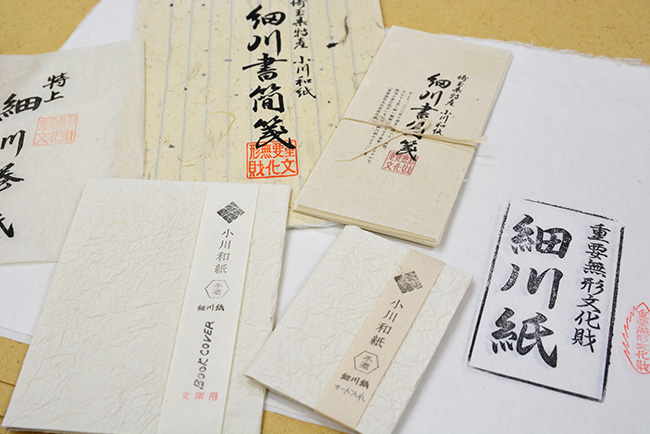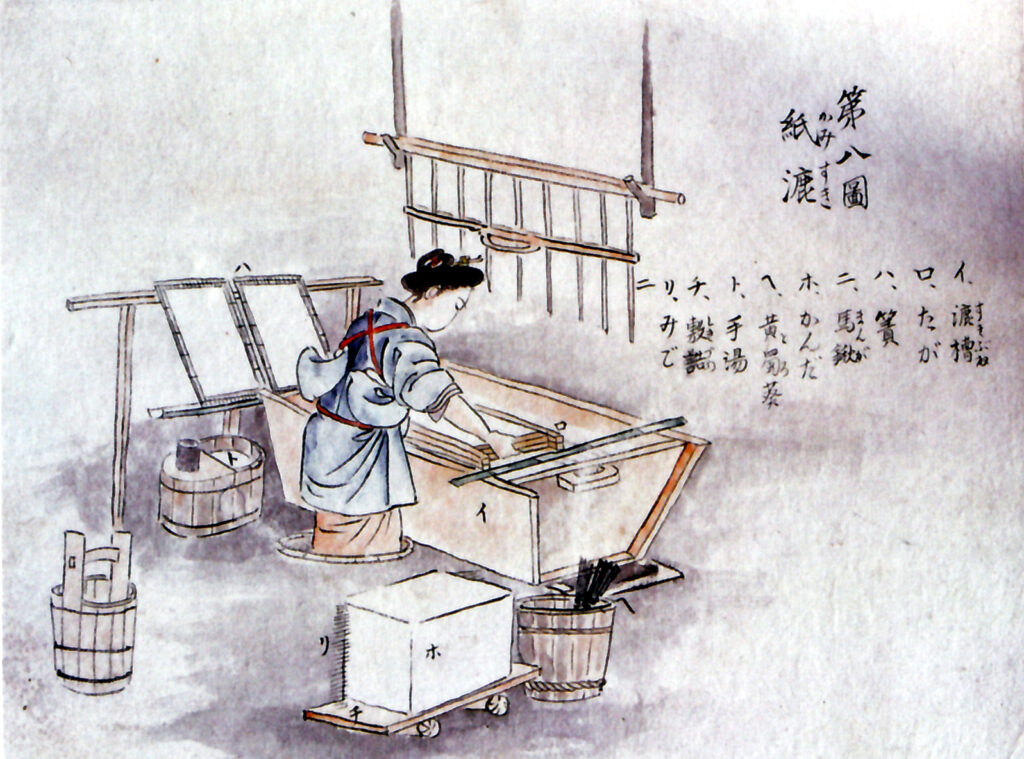About Hosokawa-shi

Hosokawa-shi is a traditional handmade Washi, using the techniques long handed down from generations in Ogawa Town and Higashi-chichibu Village, Saitama prefecture.
Its technique was designated a Japanese Important Intangible Cultural Asset in 1987
and added by UNESCO to the Representative List of Intangible Cultural Heritage of Humanity in 2014.
In the middle of the Edo period, the technique of crafting Hosokawa Hosho, a high-quality paper that was being produced in Hosokawa Village in Kishu (now Wakayama Prefecture), was said to be introduced into this region due to its proximity to Edo, a major consumer of such paper.

This paper was loved by merchants, town and village officials, and common people who used it for their documents and everyday purposes. The paper was not only beautiful but was also durable enough to be functional.
It is believed Washi paper making has been performed in this area even before Hosokawa-shi took root. According to the documents in Shosoin recorded in 774, Washi was contributed to the temple from Musashi Province (historical region consisting of modern Tokyo, Saitama and eastern Kanagawa prefectures), and the land registration books in the early Edo period indicated large amount of traces of kozo, paper mulberry. Once Edo became the economic capital, the paper came to be known as “Ogawa-gami,” and the Ogawa and Higashi-Chichibu area was developed into a major Japanese paper-producing region.
Hosokawa-shi is crafted using inner white bark of domestic kozo and crafted by traditional method and tools. The long fibers of kozo are very strong, and when bound together by Nagashi-zuki method, the resulting washi becomes one of the sturdiest papers available. Hosokawa-shi is primarily characterized by its durability.